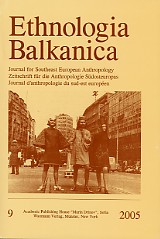Budapest and Thessaloniki as Slavic Cities (1800–1914): Urban Infrastructures, National Organizations and Ethnic Territories
Budapest and Thessaloniki as Slavic Cities (1800–1914): Urban Infrastructures, National Organizations and Ethnic Territories
Author(s): Alexander MaxwellSubject(s): Anthropology
Published by: LIT Verlag
Keywords: Slavic national movements; 19th century; early south slavic press; Macedonia;
Summary/Abstract: Nationalism depends on the spread of urbanization and, as Karl Deutsch noted, improved communication networks. This means that nationalist organizations tended to appear in cities, even cities dominated by another ethnic group. Budapest, a German-Hungarian town, hosted several Slavic national organizations, including the Serbian Tekelianum and the Matica Srpska. Slovaks furthermore tried to found the Pan-Slavic Matica Slovanských Národov v Uhersku. Thessaloniki, a Jewish-Turkish-Greek town, hosted several Slavic Revolutionary organizations, notably IMRO, the Revolutionary Brotherhood and the so-called “Boatmen”, an anarchist terrorist organization. This Slavic agitation ultimately derived from educational institutions: the University of Buda and the Exarchate Boys’ Gymnasium in Thessaloniki. The non-Slavic urban environment, however, led these early nationalist movements to emphasize inter-ethnic cooperation. Elsewhere in Eastern Europe, patriots sought to claim multi-ethnic cities for their own group, but Slavic nationalists in Budapest and Thessaloniki emphasized multi-ethnic themes which are often-overlooked within Balkan and East-European nationalism.
Journal: Ethnologia Balkanica
- Issue Year: 2005
- Issue No: 09
- Page Range: 43-64
- Page Count: 22
- Language: English
- Content File-PDF

